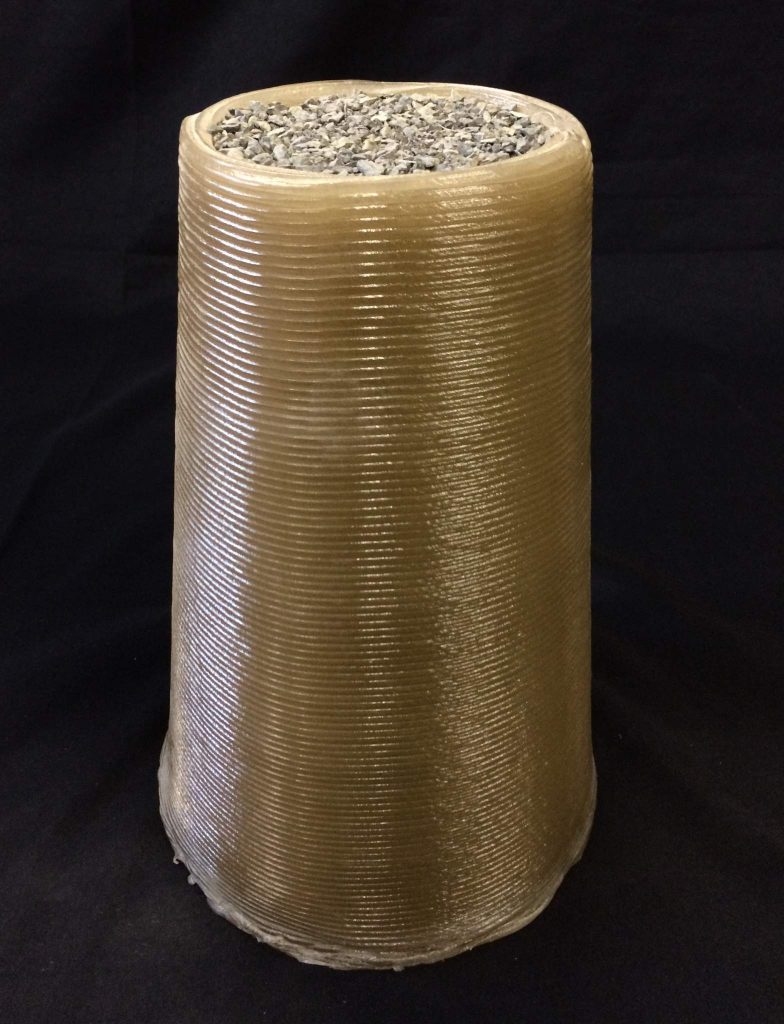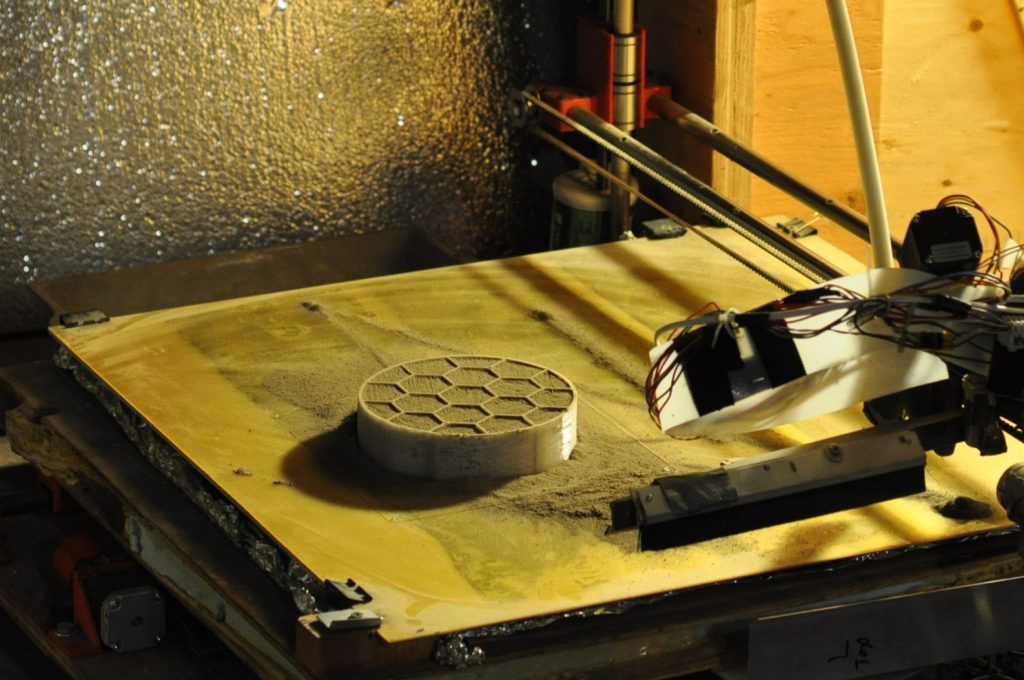Foster + Partners, a studio for architecture, urbanism and design based in the UK, has won phase 2 level 1 of NASA’s centennial challenge to make 3D printed structures for extraterrestrial planets. Foster + Partners’ designs were realized by Tennessee’s Branch Technology, collaborators on the Flotsam & Jetsam pavilion for Design Miami, and won team GAMMA a cash prize of $85,930. The University of Alaska Fairbanks’s team came in second place, earning $14,070.
Four pounds of polymer and 62,500 lbs of rubble
The first level of this phase challenged contenders to create 3D printed structures capable of holding compacted volumes of material under compression. As with every stage of the contest, materials must also be recycled, and preferably native to the surface of the Moon or Mars.
On announcement of the first and second prizes, Branch Technology tweeted that the Foster + Partners design contains 4lbs of 3D printed polymer, which can hold 62,500lbs of regolith-like rubble.

The University of Alaska Fairbanks’ design by comparison takes on a honey-comb shape, and appears to contain a dust simulating regolith found on the Moon.

Monsi Roman, program manager of Centennial Challenges, comments on Phase 2 of the competition,
Seeing tangible, 3D-printed objects for this phase makes the goals of this challenge more conceivable than ever. This is the first step toward building an entire habitat structure, and the potential to use this technology to aid human exploration to new worlds is thrilling.
Mission to Mars
The 3D Printed Habitat Centennial Challenge is part of NASA’s Space Technology Mission Directorate to generate and develop ideas and practices for other-world exploration. In discovering the presence of water on the planet, and considering its proximity to Earth, Mars has become a particular area of focus for a range of space programs.
Elon Musk’s SpaceX is particularly focused on the colonization of Mars and, since the launch of the Centennial Challenge, NASA has enlisted the help of the University of Florida’s Professor Sudipta Seal to find of way of 3D printing structures on its surface.
In level 2 of phase 2 NASA is challenging competitors to make 3D printed supporting beams to required specifications. The deadline for this is May 31, 2017. The leaders of Phase 2 will then be challenged to a final head-to-head competition at Caterpillar’s Edwards Facility in Peoria County, Illinois, taking place August 24-27, 2017.
For more updates on the 3D printed habitat challenge and other related news sign up to the 3D Printing Industry newsletter, and follow us on Twitter and like us on Facebook.
Don’t forget to vote in the first annual 3D Printing Industry Awards.
Limited tickets for the 3D Printing Industry Awards are also now available here.
Featured image: Foster + Partners’ 2 prize-winning design for a 3D printed habitat on Mars in Phase 1 of the Centennial Challenge. Image via “Team GAMMA” Foster + Partners/Astrobotic



